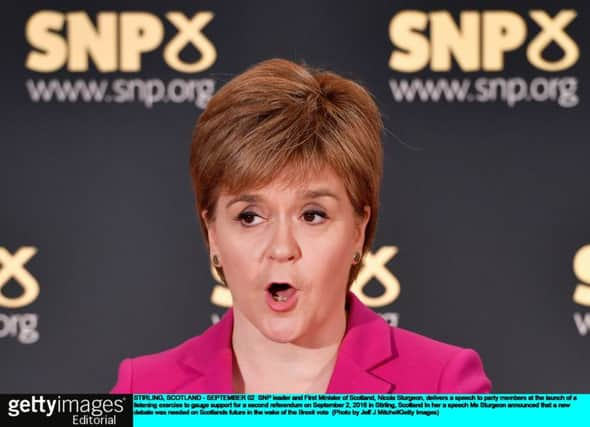Ian Swanson: May isn't good enough, Scotland deserves '˜when'


The vote at the end of a two-day debate at Holyrood will give formal status to the audacious bid for a fresh independence vote announced by the First Minister at Bute House on Monday last week.
Prime Minister Theresa May made her counter-attack on Thursday with a TV interview in which she signalled refusal of the request, declaring “Now is not the time”. She has steadfastly refused, however, to say when might be a suitable time.
Advertisement
Hide AdAdvertisement
Hide AdBut if, in the face of an approach from the Scottish Parliament for talks on a Section 30 order – the process for transferring the referendum power to Holyrood – Mrs May merely repeats her “Not now” stance she will be refusing the democratically expressed will of Scotland’s elected representatives. That risks undermining a principle of devolution which has always been recognised up until now, and provoking a backlash north of the Border.
There may be questions, not least among independence supporters, about the wisdom of going for a referendum when the polls show no majority for Yes. But Ms Sturgeon’s logic for the timetable of her proposed vote is clear – between spring 2018, by which time the Brexit deal has to be thrashed out in order for EU member states to approve it, and autumn 2019, before it is “too late” for Scotland to choose an alternative path.
Opponents, including the UK Government, argue that even if Scotland does vote for independence it would still have to leave the EU and then apply to get back in. But experts say there could be ways of Scotland maintaining some kind of link with the EU while the rest of the UK leaves.
There is also the delicate matter of whether the SNP really wants to stay as a full member of the EU. Ms Sturgeon says this is the party’s long-standing policy and it still applies. But there is also talk of joining the European Free Trade Area (EFTA) instead, which could allow Scotland to remain part of the single market but also able to trade freely with the rest of the UK. It is not clear, though, whether such a move would necessarily be any more attractive to the estimated one-third of SNP supporters who voted for Brexit than remaining in the EU.
Advertisement
Hide AdAdvertisement
Hide AdThere are all sort of questions around Indyref2, but it is difficult to avoid the feeling that the First Minister has played her hand well and Mrs May has not shown the same sure-footedness.
Despite her meeting with Ms Sturgeon at Bute House the day after becoming Prime Minister back in July, and the warm words spoken then about listening to ideas about Scotland’s position, she has conspicuously failed to make any concessions or even try to appear conciliatory over the whole Brexit issue – even omitting to let the Scottish Government know when she would trigger Article 50 to take the UK out of the EU.
Her apparent hardline approach and disregard of Scottish opinion allowed Ms Sturgeon to liken Mrs May’s style of government to “the bad old days of Margaret Thatcher” – and in Scotland you don’t get much worse than that. If the Union really is so “precious” to the Prime Minister, she would be well-advised to think again about her attitude to Scotland.